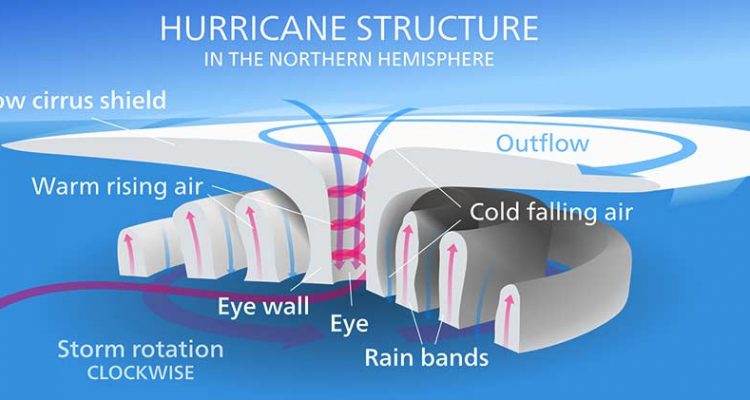With the hurricane season well underway in the country, it is but fitting to get to know more about this violent storm occurrence that can wreck havoc and destruction on homes and families. A storm becomes a hurricane only if it is able to reach 74 miles per hour. According to the Florida Climate Center, the US coastline experiences an average of 200 hurricanes a year since 1851 to 2014 and about 40% of the hurricanes hit Florida. For 2016, the Colorado State University predicts 5 hurricanes to hit the country and a total of 12 major storms although based on historical facts, only 1 to 2 hurricanes make land fall. However, they add, that their predictions are not foolproof and that residents of US coastlines should always be prepared for the unexpected because no human or man-made force can stop a hurricane from changing path.
What We Know about Hurricanes
- Hurricanes form in the ocean over warm, moist air.
- There are 5 hurricane categories starting at Category 1 (74 to 95mph) to Category 5 (156 mph or stronger).
- Lake Okeechobee, Fla., Florida Keys and Miami/Ft. Lauderdale are the 2nd, 3rd and 5th most vulnerable coastlines respectively according to the International Hurricane Research Center.
- Scientists once tried to tame a hurricane by seeding clouds with a chemical, silver iodide, with the hopes of cooling the water but it did not work.
In spite of the regular occurrence of hurricanes in the country, about one-third of pet/animal owners do not have a safety hurricane plan that would include where to put the animals and how to care for them while a hurricane is overhead.
Hurricane Myths
Here are some common perceptions about hurricanes that are not true. It helps to know about these myths because the knowledge will make it easier to prepare more effectively for a hurricane threat.
The first myth is that the wind is the main cause of damage when in fact it is the force of the water or the storm surge. Nine out of ten deaths during a hurricane is also caused by water.
A second myth is that the hurricane moves randomly and cannot be predicted. The truth is hurricanes are scientific and responds to the wind and high pressure of the lower depth atmosphere. This is why sometimes the hurricane appears to be at a standstill and at other times, move erratically.
Finally, most people see rainfall before, during, and after the eye of the hurricane passes as normal and safe but the fact is that if a hurricane is moving slowly, it is dumping more rain and this can potentially cause flooding.




